Clive Sinclair’s be-rainbowed brainchild cast a long happy shadow over my boyhood, but I’m struggling to single-out one game as a personal landmark. Should it be Arnhem, my first computer wargame, or Fighter Pilot, my introduction to flight simulation. Should it be Battlecars, in recognition of the afternoons me and Matt spent chasing each other round autodromes in oil-pissing, flame-spitting death sedans? Or Blockbusters, an improbably moreish quiz game ‘won’ by my sister when she competed on the TV show of the same name? Maybe Atic Atac, Arcadia, Deathchase or Wheelie for just being so utterly brilliant?
Football Manager

No, I think I’m going to have to plump for Football Manager. In the early Eighties my passion for Association Foot-to-ball was fiery intense, and Football Manager was bliss on a cassette.
Where other games were puzzles to be unravelled or hand-eye challenges to be mastered, FM was – uniquely at the time – a magic porridge pot of epic tales. No two seasons or cup runs were ever the same. No rise from fourth to first division, without its moments of tension and air-punching jubilation. I loved the mind-boggling ambition of the thing. Some bloke had taken British football – the clubs, the players, the agony and ecstasy – and jammed it all inside that little hunk of plastic in front of our telly. Amazing! Plainly, anything was possible.
Hind
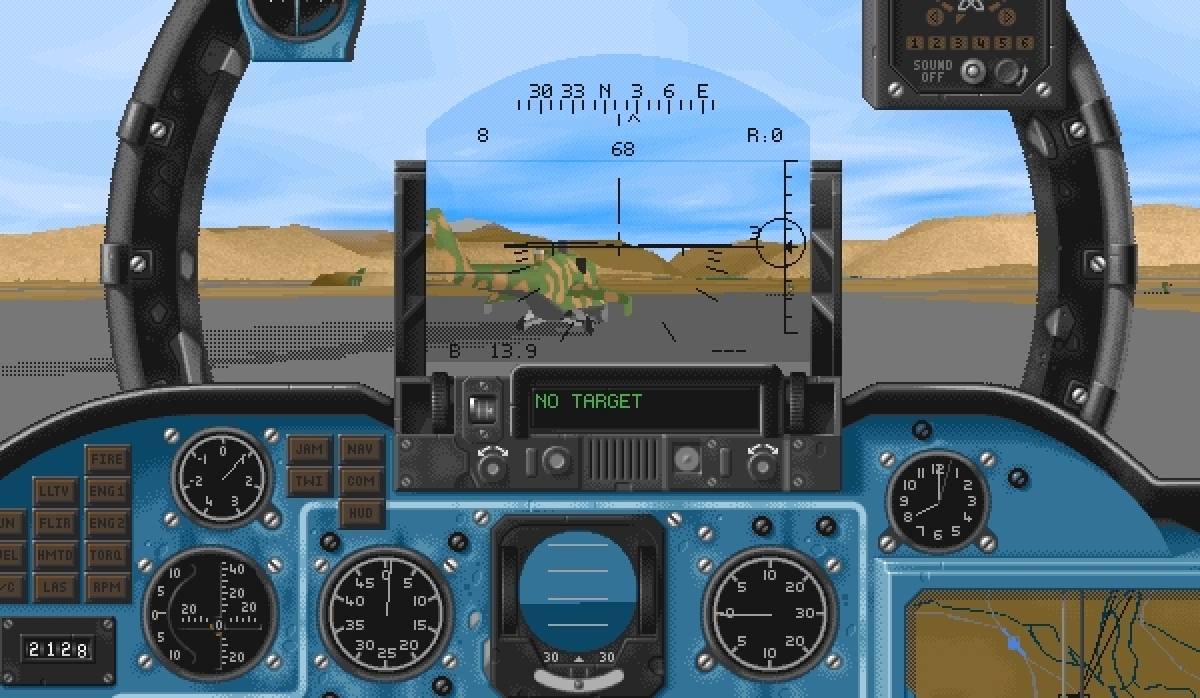
The bond between a simmer and their favourite conveyance is a beautiful thing. For a spell in the mid-nineties my vehicular soul-mate was a misshapen Russian helicopter gunship. I’d been flying flight sims off and on (mostly off) since Spectrum days, but Digital Integration’s Hind was the first sim steed I encountered that had something approaching a character.
So many years on, it’s hard to remember exactly what that character was, but I do recall the moment when I realised I was deriving as much pleasure from flying as I was from rocketing the sherbet out of the Mujahideen. The not-so-simple acts of taking off and landing, following winding river valleys, or lurking behind ridges, gratified. I reached a point where I could make that hovering hoodlum do almost anything and that proficiency generated profound joy.
My affection for the Hind probably also owed something to its unapologetic Russian-ness. The strange blue cockpit dotted with Cyrillic labels, the Nagging Nora with its thick Slavic accent… in a genre awash with American hardware my constant companion felt as exotic as any X-wing or TIE fighter.
The sorties I came to enjoy most were the ones where I was asked to ferry fresh troops out to the front or medevac back the wounded. In fact I enjoyed these outings so much I spent days hex-editing the mission files to create new ones. It was a mad Sisyphean task. I’d change a likely-looking number then fly the file (assuming it ran) to see exactly what I’d altered. Lunatic, but the sort of thing you do when you’re head-over-heels in love.
Unreal Tournament
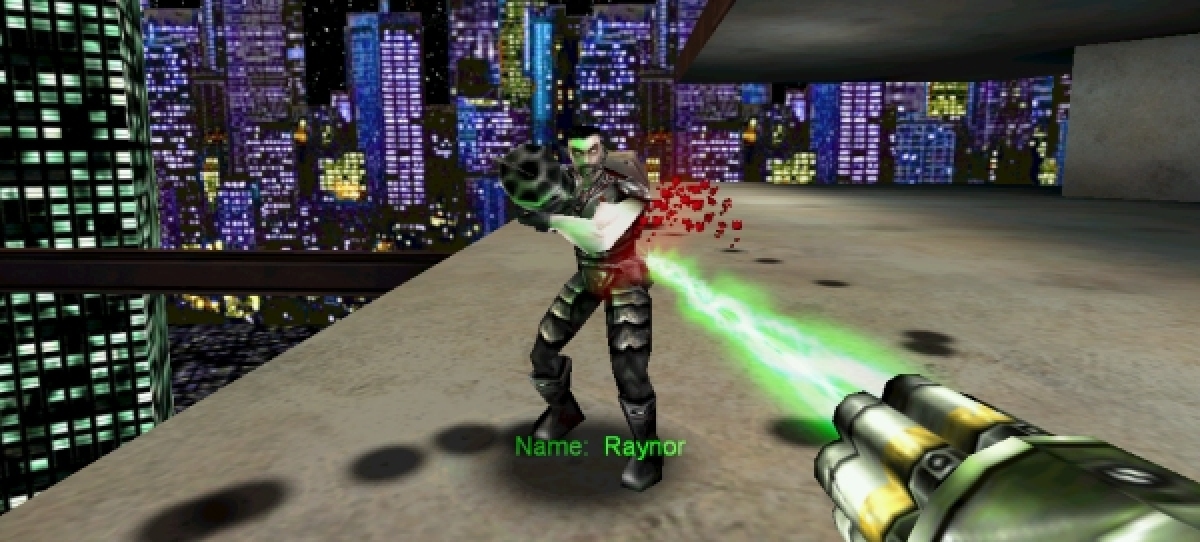
If you told me I had only 24 hours left to live and must spend one of those hours gaming, for old time’s sake I’d have to spend it bouncing between the triple towers of DM-Morpheus. UT had me by the throat/plums the minute I tried the demo. The moody maps, the brutal weapons, the frantic pace, the jibes, the gibs… I loved every offal-strewn inch of it
Looking back, its timing was impeccable. Increasingly hacked-off with intrusive narratives, stagey set-pieces and eejit AI, all the millennial me really wanted from an FPS was to be able to run and leap and strafe and project projectiles in the direction of worthy adversaries without some overbearing designer sticking his oar in every few minutes.
UT gave me all that and more. I sprinted down passages globuled with explosive snot, head shot lizard men while falling backwards into terminal abysses, impact-hammered fools into pools of corrosive goo, and used ricocheting razor blades to winkle-out anyone that dared to hide. Whatever tribulations the day had brought, were swept away in a foaming torrent of kill. Darting through Deck 16, Turbine, or Phobos, I was liquid, I was inspired, I was UNSTOPPABLE.
Combat Mission: Beyond Overlord
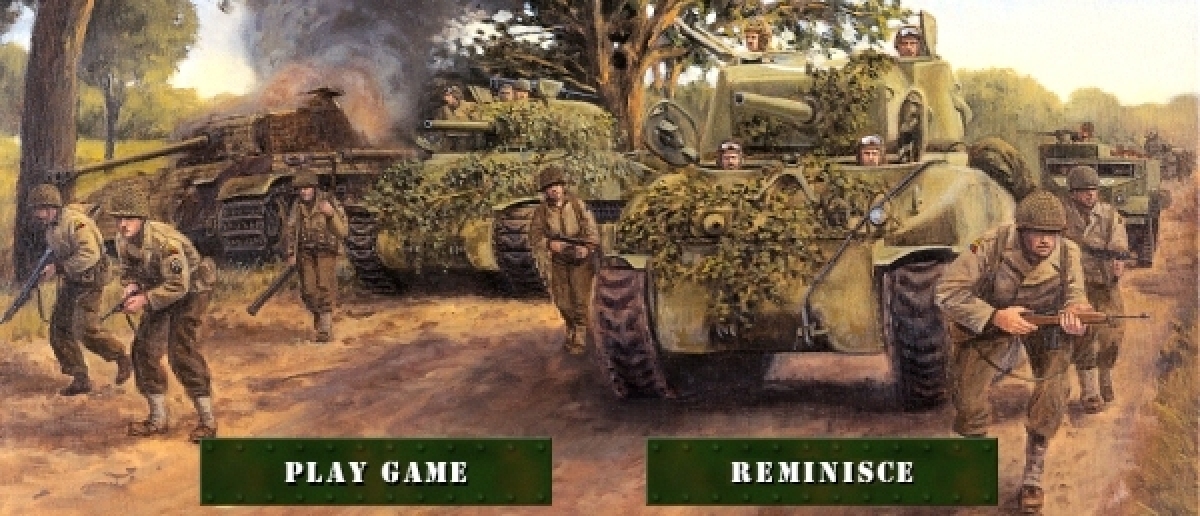
To understand the impact this WW2 wonder had on me circa 2001 you really need to be aware of the following three scenes:
Scene #1. A small boy crawling into a bed strewn with Victor and Commando comics, after staying up disgracefully late (thanks Dad) to watch A Bridge Too Far on the telly .
Scene #2. That same boy, a little older, sprawled on his bedroom carpet (conveniently composed of green carpet tiles) conducting a WW2 skirmish with Airfix 1/72 soldiers and tanks, lichen bushes, a ruler, dice, and a set of homemade rules inspired by a Donald Featherstone library book.
Scene #3. The boy, now full-grown, boring his workmates rigid with an account of how he’d managed to insert a self-drawn BMW motorcycle combination unit into the Close Combat 2 demo.
CMBO was the game I’d been waiting for my whole life. It took the rich, resonant combat drama of the-game-that’s-currently-scowling-at-me-from-the-shelf-because-I-didn’t-include-it-in-this-selection and made it 3D and twice as truthful. Here, finally was a game that delivered engagements like the ones I’d read about in extraordinary war memoirs such as Ken Tout’s Tank! (I’d moved on from war comics by then). The confusion, the mistakes, the cruel twists of fate, the fearful suddenness of death… it was all there unfolding right in front of me.
The fact that I could only dish out orders every sixty seconds only made the experience more engaging. The enforced pauses followed by the minute of hands-off action, forced me to study the battlefield, plan ahead and , best of all, sweat. Like a real commander I couldn’t instantly intervene when a new threat appeared or a new opportunity presented itself. I had to trust my men to think for themselves. Remarkably, they usually did just that. Scouting armoured cars stumbling on enemy armour would withdraw or pop smoke. Troops lashed by HMG fire while advancing across open fields would hasten, hit the dirt or make for nearby cover. It didn’t matter a jot that a 10-man section was represented by three stiffly animated, balloon-headed mannequins, or houses were crude boxes, because the behaviours felt so real.
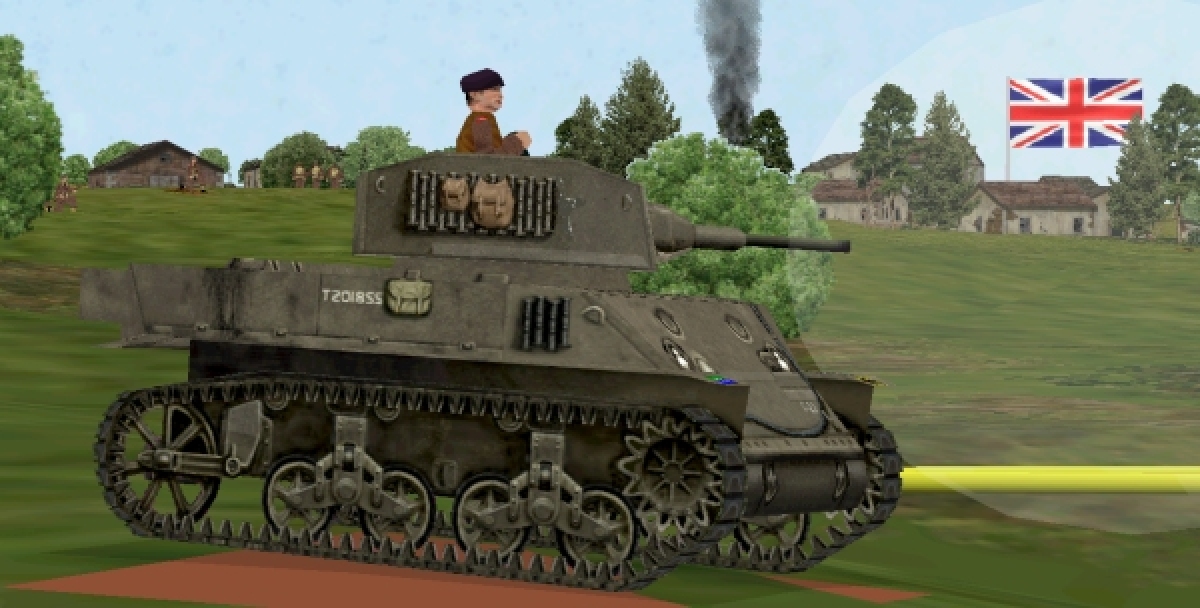
My Dad, one of several people I infected with my CMBO enthusiasm, insisted on playing the game from a top-down perspective which used to annoy the hell out of me. That third dimension was a big part of the magic and there for a reason. It made finding those crucial hull-down positions simple and sharing the travails of your troops possible. Nothing beat Tab-ing to the eye-level of the bazooka team you’d just spent three turns sneaking into position, moments before they launched their last rocket at a skulking Tiger.
Dungeons & Dragons
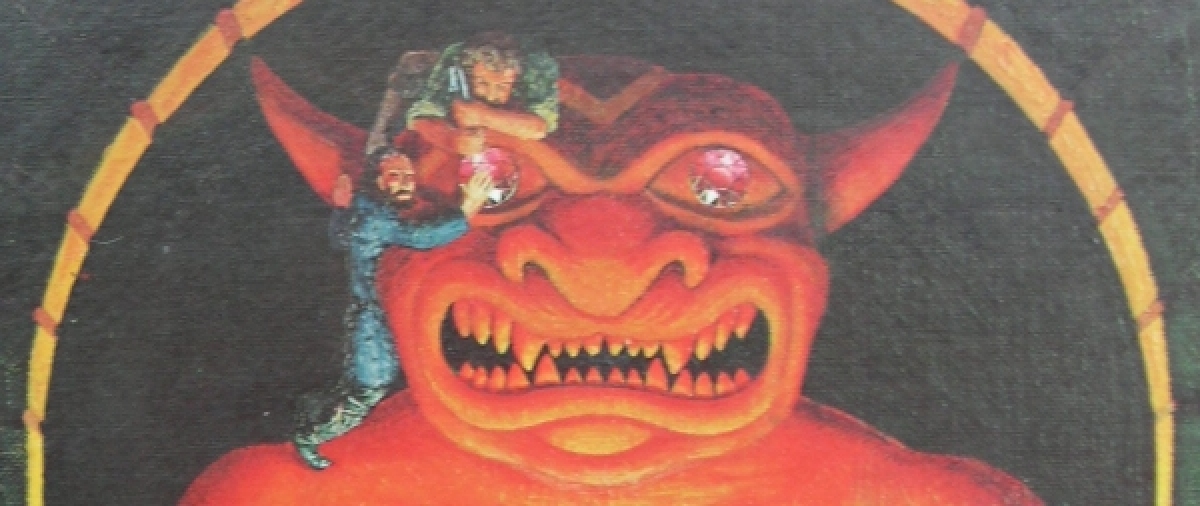
Talking about the games that made me without mentioning the daddy of pen-and-paper RPGs would be like talking about the history of British sitcoms without mentioning Mrs Slocombe’s pussy. Being Methuselah-old, a significant portion of my childhood was spent without electronic entertainment of any kind (though naturally we had our steam-powered monkeybots). Into this desert, sometime in the early 80s scuttled something so vivid, so life-invertingly outlandish, I’ve been searching for a comparable gaming high ever since.
I can’t quite remember how it happened, but I know it happened rapidly. One day we were dawdling home from school as-per-usual, the next the pavements were empty. We were huddled round a table slaying skeletons, defusing traps, haggling with innkeepers, and watching breathlessly as gem dice tumbled. How those gem dice tumbled! If you had bound us in enchanted chains, and imprisoned us in an enchanted tower in the middle of the most enchanting forest in Enchantria, we couldn’t have been more enchanted.
At the risk of sounding disloyal, it was AD&D rather than any videogame that first exposed the boy Stone to the True Majesty of Gaming. Through it I saw how fragile reality was, and how incredibly intoxicating it could be to move and act in a virtual world. AD&D blazed the trail, pc games came along later and did the colonization.

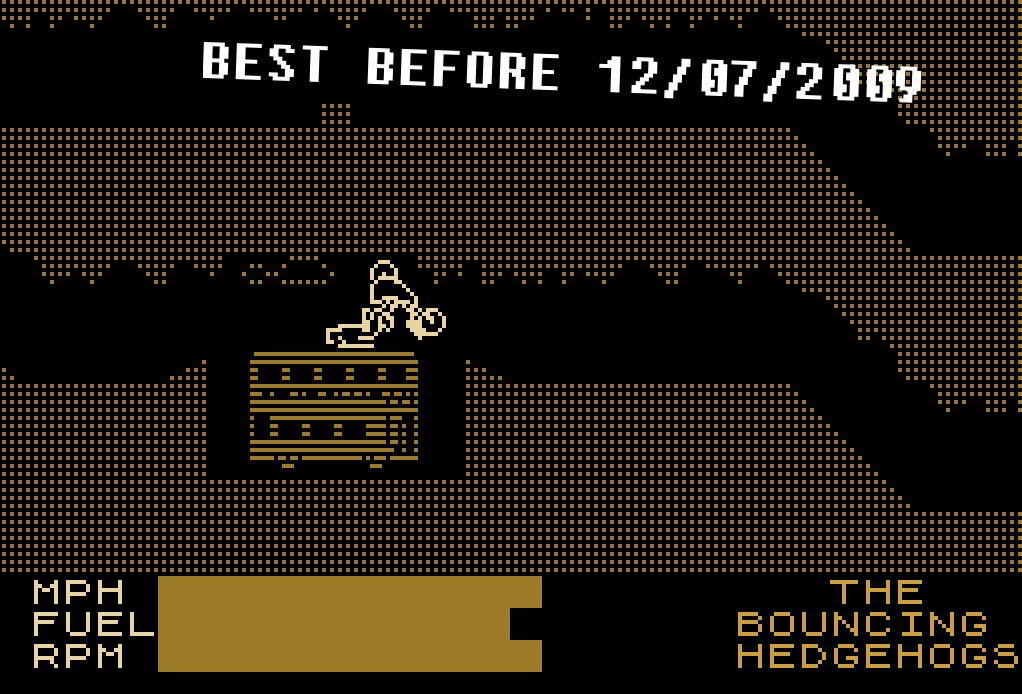
Ah, gaming nostalgia. I was computer gaming before home computers were a thing, the Sovereign Supersports with Light Gun.
After encountering a ZX81 at school (Chuckie Egg!) I was given my first proper computer: the mighty Vic-20. Games on there maybe weren’t great, but nobody told Jeff Minter this, and Metagalactic Llamas Battle at the Edge of Time kept me going until I upgraded to the powerful C64.
That had Pole Position, Super Sprint, later on Power Drift and Buggy Boy. Yep, an arcade racing golden age.
Of course there was also Silkworm, Ikari Warriors, who knows how many R-type clones, the incomparable Paradroid and dozens of other games not terribly relevant to this site.
But there were non-race sims too, Silent Service 2 giving me a love of sub sims that’s still going strong today, and of course, Elite. It set so long ago the bar against which all other space sims are measured, and so many still can’t reach. For sports there were playable footy sims but for arcade sporting action very little has ever come close to the original Speedball. That deserves a proper reboot.
I would note that in addition to Tim’s highlighted entry, there were a number of excellent football management games including a game that just blew away the rest by doing so much more despite the paucity of computing resources. Tracksuit Manager turned out to be the start of a modestly successful career for a couple of Everton fans.
I didn’t get on with wargames on the C64. They tended to be big picture wargames, entire wars won and lost with a handful of units on each side.
That changed with my next computer, an Atari ST I bought for the same price I sold my C64. Defender of the Crown predates the Total War series but very much established the genre.
The ST helped start that premature peak and subsequent decline referenced in Tim’s Flight Sims interview. Suddenly the resources were there for complex controls, supporting a more sophisticated flight model, and in addition to digital joysticks it had an analogue mouse that allowed a whole new range of inputs.
The flight sims were good, but the sports sims were better. Sensible Soccer or Kick Off; did you want slow tedious but broadly realistic football or fast paced high skill arcade footy that somehow captured the entire ethos of the sport even as it failed to properly simulate it? Have both!
There were many other great games, but the ST (and Amiga) allowed some bloke called Geoff to truly realise his potential. Stunt Car Racer had shown what he could do given the chance and someone (Microprose – of course) gave him the chance. Grand Prix 2 turned motor racing into sim racing, and everybody since has been merely following that lead.
Since then? Thousands more games. But those were the ones that didn’t make me as a gamer, they made the gaming industry.
Interesting how very similar your experiences are to my own. You really jogged my mind on some good memories. Going to replay paradroid now..
Great read. It was definitely games that made me (different ones) more than a few other major influences like Star Trek and probably that Catholic school I went to.
As per above comments, some really good memories revived with this article, especially the D&D finale, which completely rings true with me too. A real feel good article, thank you.